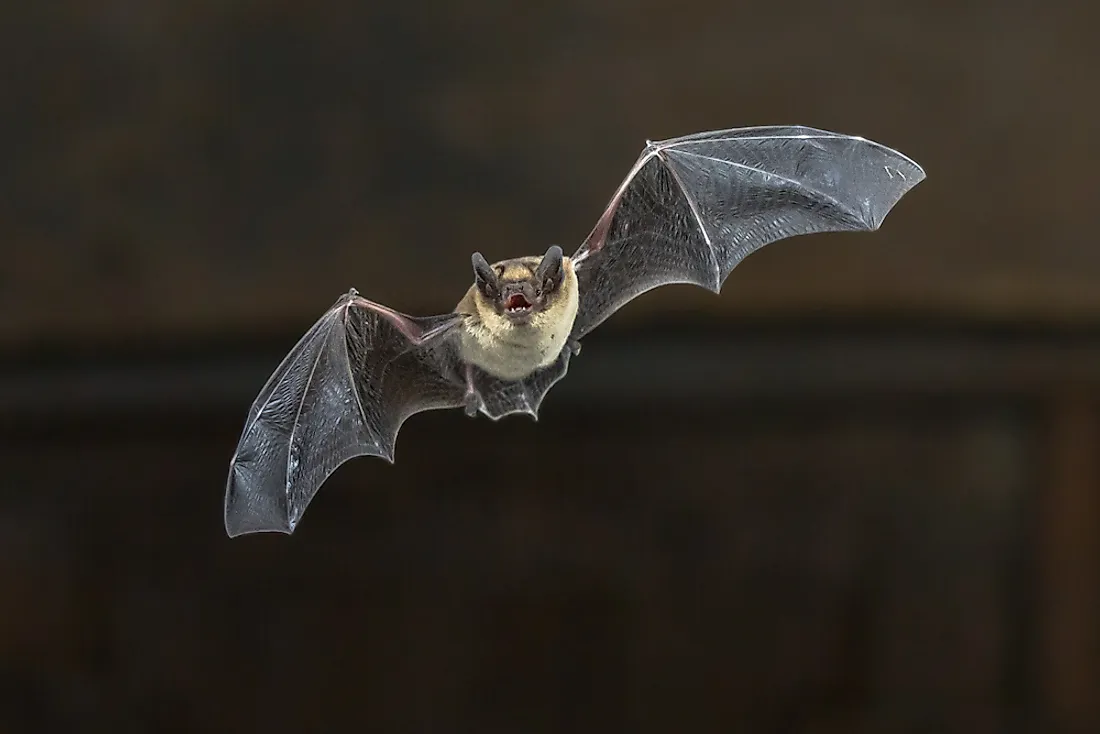Which Animals Can Echolocate?

Echolocation is a physiological process used by some animals to locate distant or invisible objects by using the sound waves reflected off the objects located within their environment. Echolocation was first demonstrated in bats by Robert Galambos in 1938, and the concept was further developed by Lazaro Spallanzani, Griffin, and Louis who after separately conducting a series of experiments concluded that when bats fly at night they rely on other senses apart from the sense of vision alone. Echolocation calls usually range in frequency from 20 kHz to 200 kHz. Echolocation calls are typically based on the frequencies, intensity and the duration of the call.Animals use echolocation to navigate, avoid objects, and hunt for food. Echolocating animals include; Microchiroptera bats, whales, dolphins, Shrews, swiftlets, and oilbirds.
Microchiroptera Bats
Bats are some of the few mammals which are able to use the sound to “see” in the dark. Bats echolocate by producing sounds through contracting their larynx or clicking their tongues. In some bats, the sound is made and sent out through their nose, but in the majority of bats, this is done through their mouth. Bats send out calls with both constant and varying modulated frequencies. The Higher frequency calls enable the bat to get sufficient information about the size, range, speed, and general location of the prey or the object. The calls emitted, typically range from 20db to 120db.The ears of the bats are uniquely structured in such a way that they can pick the frequencies of the calls emitted and the resulting echoes.
Whales And Dolphins
Marine animals such as toothed whales and dolphins use echolocation to detect objects along their path and in the depths of the ocean where it is quite dark. Dolphins always produce click sound through their nasal tissues and use the resulting echoes to communicate, avoid predators, and forage for food. Whales also emit sounds from their foreheads which reflect off the objects near them and use the resulting echoes to navigate and hunt for food.
Shrews
Shrews are terrestrial mammals found in different habitats, but most prefer places with plenty of ground cover for protection. Shrews produce ultrasonic sound by opening and closing their mouth to emit a faint high pitched twittering sound and use the resulting echoes to understand their environment and how best to navigate through. In some shrew species, they use echolocation to locate suitable cover in their surrounding for protection against predators.
Swiftlets
Swiftlets are some of the few bird species which use echolocation to navigate their way within the dark caves. Swiftlets emit broadband click-type biosonar calls and use the echoes produced to navigate and for social purposes. Bird echolocation skills are still very rudimentary and can only enable them to detect large object unlike in bats where they can locate even the smallest objects.
Oilbirds
Oilbirds navigate, roost, and nest in dark caves. Oilbirds emit short bursts of clicking sound which bounces off the objects along their path to create echoes. The echoes return to the birds at different pitch and intensity. The echoes enable the birds to identify the size, shape, and location of the objects.Echolocation helps the birds to avoid collision with other birds within the colony and obstacles when hunting for food at night.
Modern Echolocation
The principle of echolocation has been applied by people in the modern times to navigate and locate objects. Sonars and radars are some of the modern technological developments that apply the concept in their operations. Some blind people have also developed echolocation skills which enable them to locate obstacles along their paths.











